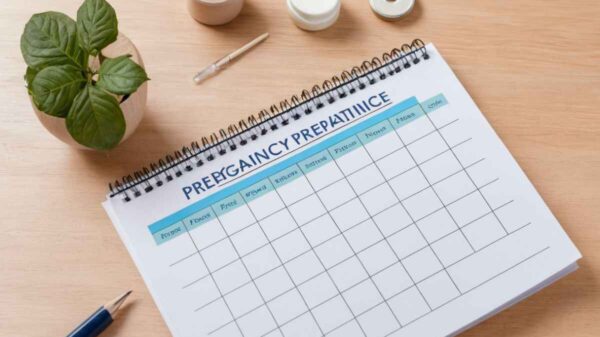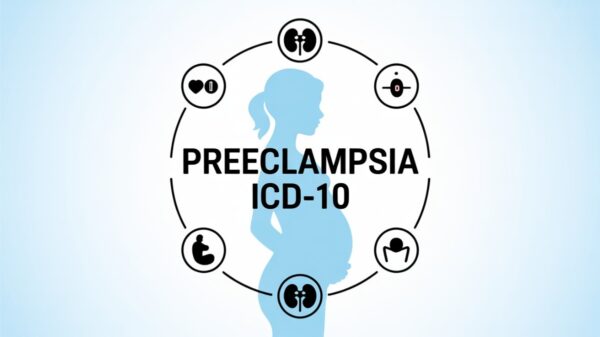Embarking on the pregnancy journey is a transformative experience filled with joy, anticipation, and growth. Each trimester brings its milestones, challenges, and triumphs. A well-structured pregnancy planner can be an invaluable tool to guide expectant mothers and their families through this life-changing journey. In this blog, we’ll explore the essentials of pregnancy planning, covering each trimester in detail with expert advice, actionable tips, and insights.
First Trimester: Laying the Foundation

Understanding the Miracle of Life
Pregnancy planner begins with conception, the remarkable process where an egg and sperm unite to create a zygote. This marks the start of a new life as the zygote grows and differentiates into the cells forming your baby’s body.
Coping with Emotional and Physical Changes
From hormonal mood swings to fatigue and tender breasts, the first trimester is often filled with noticeable changes. Understanding that these symptoms are natural can help ease anxieties. Rest, hydration, and light exercises can provide relief.
Nurturing a Healthy Start
- Prenatal Vitamins: Ensure you get essential nutrients like folic acid, calcium, and iron to help your baby’s development.
- Balanced Diet: Incorporate fruits, vegetables, whole grains, lean proteins, and healthy fats into your meals.
- Morning Sickness: Combat nausea by eating small, frequent meals and staying hydrated.
Early Appointments and Tests
Choosing the proper healthcare provider is key to a smooth pregnancy. Schedule your first prenatal visit to confirm the pregnancy, estimate the due date, and discuss essential screenings. The first ultrasound is a magical moment where you glimpse your baby for the first time.
Emotional Well-being
- Manage Hormonal Shifts: Prioritize self-care activities and seek support when needed.
- Build a Support System: Lean on family, friends, or parenting groups for encouragement.
- Communicate with Your Partner: Open dialogue strengthens your bond and ensures you’re on the same page.
Second Trimester: Blossoming Glow

Physical Transformations
- Baby Bump Joy: Watching your belly grow can be an exciting and tangible reminder of the life within.
- Radiant Skin and Hair: Hormonal changes often bring a healthy glow and shiny locks.
- Managing Discomfort: Use supportive pillows and good posture to alleviate back pain and leg cramps.
Bonding with Your Baby
- First Kicks: Feeling your baby move for the first time is an unforgettable milestone.
- Gender Reveal: Whether through a party or a private moment, discovering your baby’s gender can be thrilling.
- Naming Your Baby: Discuss names, drawing inspiration from family traditions or personal preferences.
Nutrition and Exercise
- Optimized Diet: Include omega-3s, iron-rich foods, and plenty of water to nourish your growing baby.
- Prenatal Exercises: Gentle yoga, walking, and swimming can improve flexibility, strength, and circulation.
Preparing the Nest
Start designing your nursery and assembling essential baby gear, such as cribs and car seats. Collaborate with your healthcare provider to outline a birth plan that reflects your preferences.
Third Trimester: The Final Countdown

Body and Mind Preparations
- Managing Symptoms: Counter swelling and fatigue with rest, hydration, and light physical activity.
- Final Prenatal Visits: These check-ups are crucial for monitoring your baby’s position and preparing for delivery.
- Mental Readiness: Learn about labor stages, pain management, and postpartum care to ease anxiety.
Preparing for Labor and Delivery
- Pack Your Hospital Bag: Include essentials like comfortable clothes, toiletries, and items for your newborn.
- Understand Birthing Options: Explore methods like natural birth, epidurals, or cesarean delivery with your provider.
Nesting and Final Touches
Install the car seat, finalize your nursery, and prepare meals for postpartum recovery. Celebrate this special time with a baby shower and the support of loved ones.
Managing Expectations and Embracing Flexibility
While birth plans are a helpful guide, labor and delivery can be unpredictable. Embrace the unexpected with a positive outlook and a willingness to adapt. Discuss your concerns with your support system or a professional to ease anxieties.
Conclusion
Pregnancy is an extraordinary journey of transformation and love. By using a thoughtful pregnancy planner and embracing each trimester’s unique moments, you can navigate this time with confidence and joy. Remember to prioritize self-care, seek support, and cherish the incredible experience of bringing new life into the world.











